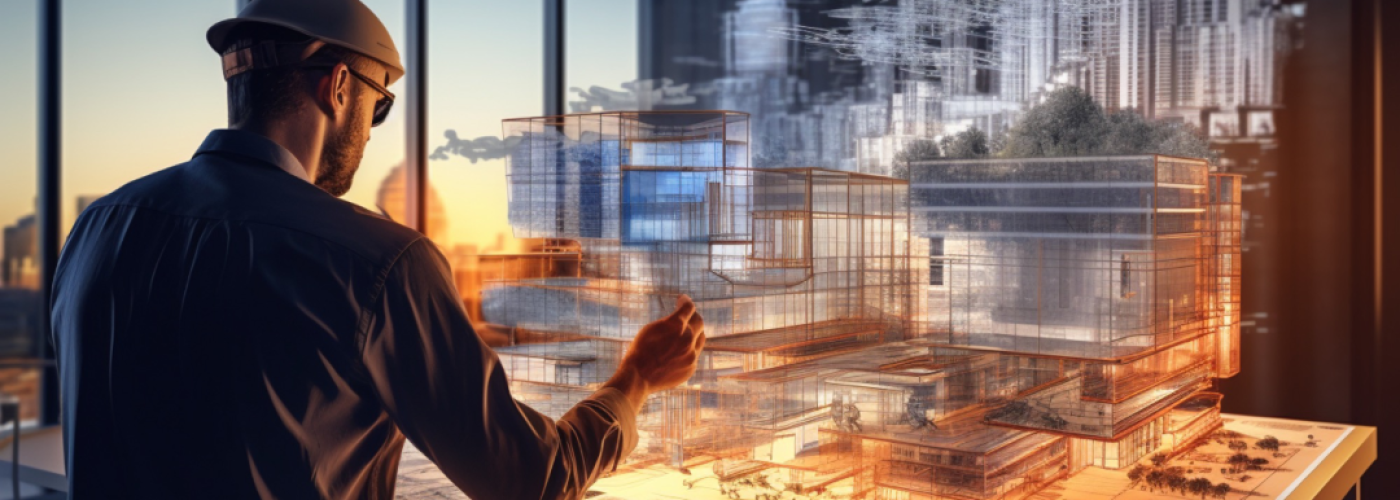Building Information Modelling (BIM) has been a part of the construction industry since the 1970s, but it wasn’t until the early 2000s that it gained significant traction. Since then, BIM has continuously evolved, enhancing efficiency, communication, and productivity across the industry. Now, with the integration of Artificial Intelligence (AI), BIM is set to undergo another transformative leap, bringing new capabilities that promise to revolutionise how we plan, design, and manage construction projects.
Understanding Building Information Modelling (BIM)
BIM is both a process and a digital platform that enables the planning, design, construction, and management of buildings and infrastructure projects. Through BIM software, stakeholders can visualise the entire lifecycle of a project before any physical work begins. This capability allows project managers to comprehend the complexities of a project fully, facilitating better scheduling, resource allocation, and risk mitigation to ensure that projects are completed on time and within budget.
AI’s Impact on BIM: Enhancing Capabilities
The integration of AI into BIM has introduced significant advancements in several key areas, including clash detection, energy simulation, quality control, cost estimation, and schedule optimisation.
- Clash Detection: AI enhances BIM’s ability to detect clashes and conflicts in design. By applying sophisticated algorithms to analyse 3D models, AI can identify potential collisions between different elements of a project, allowing designers to address these issues before construction begins.
- Energy Simulation: AI plays a pivotal role in simulating a building’s energy performance. For instance, when designing HVAC systems, AI can consider factors such as building orientation and design to create the most energy-efficient solutions. This results in more sustainable buildings and reduced operational costs.
- Quality Control: AI-driven quality control is another significant advancement. By analysing sensor data, AI can identify potential issues on-site, enabling project managers to take corrective actions before these problems escalate, ensuring higher standards of construction quality.
- Cost Estimation: While traditional BIM made cost estimation more accessible, AI takes this a step further by providing even greater accuracy. By analysing various data points, including project dimensions, material requirements, and labour costs, AI can generate precise cost estimates. This precision is crucial for competitiveness, as it prevents underbidding, which can erode profits, or overbidding, which can lose contracts.
- Schedule Optimisation: AI’s ability to analyse site layouts and equipment availability allows for the creation of highly accurate project schedules. This capability ensures that construction timelines are realistic and aligned with client expectations, further enhancing project management efficiency.
AI and Augmented Reality (AR): A Powerful Combination
Augmented Reality (AR) has gained traction in the construction sector, and its integration with AI-enhanced BIM is proving to be a game-changer. AR allows stakeholders to visualise the final product in a more immersive way than traditional blueprints or digital models. For example, clients can virtually walk through a building before construction begins, offering a more tangible understanding of what the finished project will look like. This capability is not only impressive but also invaluable in securing client buy-in and satisfaction.
Challenges to AI Adoption in BIM
Despite its many benefits, the adoption of AI-enhanced BIM is not without challenges. The most significant barrier is cost, as implementing advanced AI technologies can be expensive. Additionally, while BIM offers numerous preset designs, these can sometimes be restrictive for those seeking highly customised solutions. However, as AI technology continues to evolve, these limitations are likely to diminish, making it an increasingly attractive option for the construction industry.
Conclusion
The integration of AI into BIM is set to redefine the construction industry, offering unprecedented levels of efficiency, accuracy, and innovation. While challenges remain, the potential benefits far outweigh the drawbacks, making AI-enhanced BIM a critical tool for the future of construction. As this technology continues to develop, we can expect even greater advancements, paving the way for smarter, more sustainable building practices.
Building, Design & Construction Magazine | The Choice of Industry Professionals





